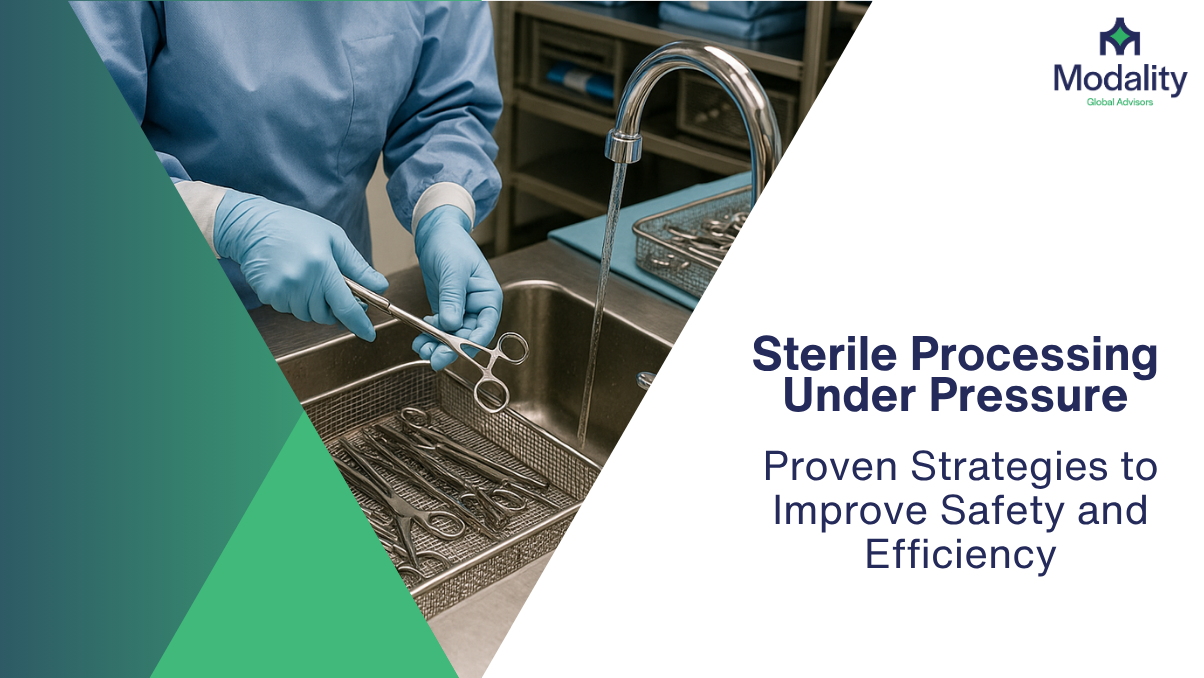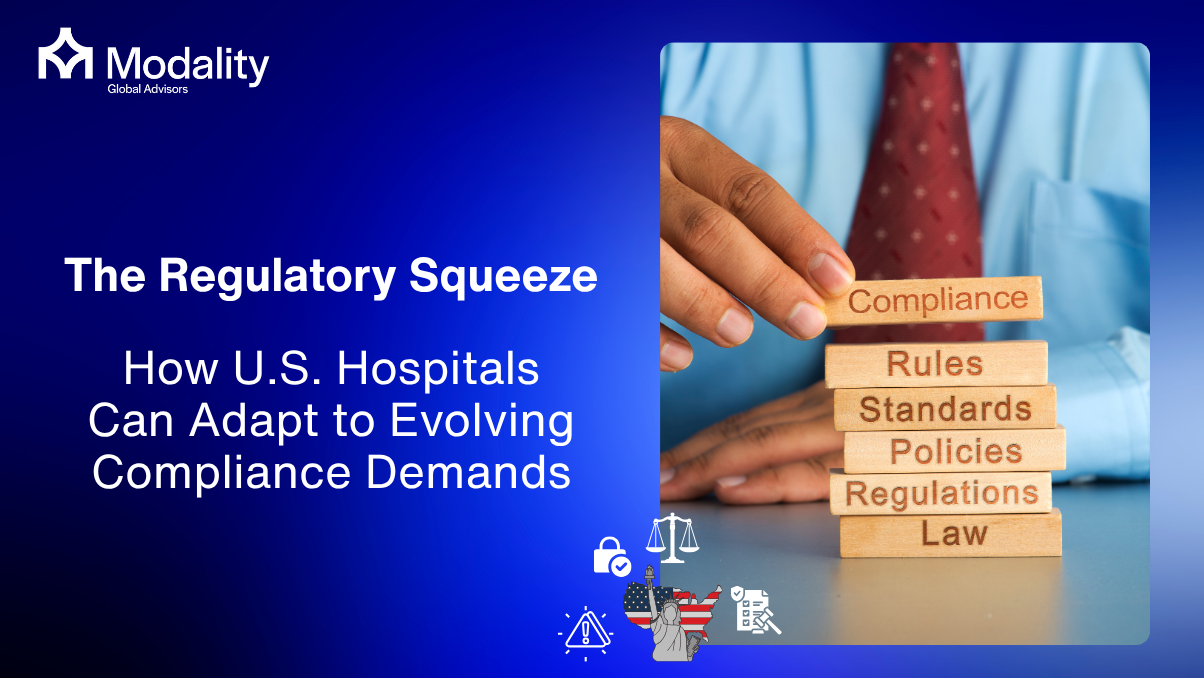Sterile Processing Under Pressure: Proven Strategies to Improve Safety and Efficiency
Sterile Processing Under Pressure: Proven Strategies to Improve Safety and Efficiency
In every hospital, the Central Sterile Processing (CSP) department is the hidden engine of surgical safety. It’s where instruments are cleaned, sterilized, and prepared for use in operating rooms. Yet in U.S. hospitals, sterile processing teams are under increasing pressure managing rising surgical volumes, stricter compliance requirements, and persistent staffing shortages. The consequences of bottlenecks in CSP are far-reaching, affecting patient outcomes, operating room efficiency, and financial performance.
As Modality Global Advisors hosts its upcoming webinar, Fixing Central Sterile Processing – Real Operational Solutions You Can Implement, we explore why CSP matters more than ever and highlight strategies hospitals can deploy now to strengthen this vital function.
The High Cost of CSP Failures
When sterile processing falters, patient safety is at risk. Research shows that up to 25% of surgical site infections (SSIs) are linked to instrument reprocessing failures (American Journal of Infection Control, 2023). These infections not only jeopardize patient outcomes but also extend hospital stays and increase readmissions.
The financial stakes are equally high. The Association of periOperative Registered Nurses (AORN) estimates that operating room downtime costs between $20 and $80 per minute. Delays tied to missing or unsterile instruments translate directly into wasted resources, cancelled cases, and dissatisfied patients.
Meanwhile, staffing challenges continue to intensify. A 2024 workforce survey reported that nearly 40% of sterile processing departments in the U.S. have vacant positions, forcing existing teams to work under significant strain (Healthcare Purchasing News, 2024).
Proven Strategies for Safer, More Efficient CSP
- Elevate CSP as a Core Clinical Service
CSP should not be viewed as a backroom operation but as a frontline clinical service. Including sterile processing leaders in perioperative committees and tracking CSP-specific KPIs such as turnaround time, error rates, and instrument availability creates accountability and aligns CSP goals with OR performance. - Invest in Workforce Training and Certification
Certified sterile processing staff are significantly less likely to make errors. Hospitals that implemented structured training and certification pathways reported a 23% reduction in reprocessing mistakes (IAHCSMM, 2023). Providing career growth opportunities and incentive pay also improves retention. - Digitize Tracking and Communication
Manual logs are error-prone and slow. By adopting RFID or barcode-based tracking systems, hospitals gain real-time visibility into instrument trays, preventing lost equipment and avoiding last-minute OR delays. Integrating tracking systems with OR scheduling platforms ensures better coordination between departments. - Apply Lean Workflow Redesign
Lean and Six Sigma approaches help eliminate inefficiencies. Standardizing tray contents, reorganizing workspace layouts, and creating one-way flows for sterile and non-sterile items have helped U.S. hospitals reduce tray turnaround times by up to 30% (case studies in perioperative improvement). - Leverage Automation and Smart Technology
Automated washers, sterilizers with digital logging, and AI-driven scheduling tools can improve throughput while ensuring compliance. Early adopters report fewer human errors and greater efficiency in handling high surgical volumes.
Measuring Success
Hospitals should monitor KPIs such as:
- Tray turnaround time
- Reprocessing error rate
- Instrument availability rate
- OR case delays tied to CSP
- Staff competency validation scores
Looking Ahead: CSP As A Strategic Lever
Sterile processing is under pressure, but it also represents an enormous opportunity. By investing in workforce development, digitization, automation, and workflow redesign, U.S. hospitals can reduce risks, improve efficiency, and ultimately safeguard patient outcomes.
Forward-looking hospitals are beginning to realize that CSP is a strategic driver of perioperative success. When functioning at its best, sterile processing reduces preventable harm, minimizes costly OR delays, and strengthens compliance with national and international standards.
In an era where surgical safety and operational efficiency are paramount, hospitals that elevate CSP to a leadership priority will be best positioned to meet rising patient demand, regulatory expectations, and financial pressures.
Join us at MGA’s upcoming webinar to learn more about real operational solutions that can help your sterile processing department thrive under pressure.
Sources:
- American Journal of Infection Control (2023)
- Association of periOperative Registered Nurses (AORN, 2024)
- Healthcare Purchasing News (2024)
- International Association of Healthcare Central Service Materiel Management (IAHCSMM, 2023)






